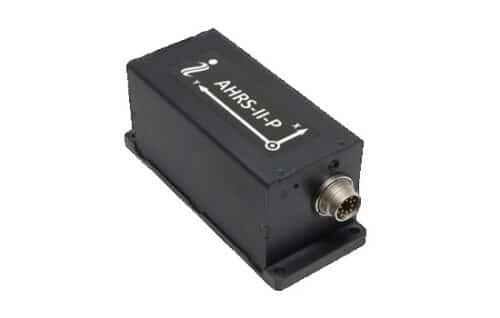An Attitude and Heading Reference System (AHRS) consists of IMU sensors and a processing unit that provides attitude and heading information. As an IMU generally delivers sensor data to an additional device that computes attitude and heading, AHRS is a cost-effective solution than conventional IMUs. It utilizes three single-axis high-precision accelerometers, magnetometers, and gyroscopes to provide accurate Heading, Pitch, and Roll of the device under measurement.
AHRS are highly reliable systems that are in common use in commercial and business aircraft. They are typically integrated with electronic flight instrument systems (EFIS) to form the primary flight display. The micro-electronic mechanical gyroscopes in the AHRS are responsible for capturing motion data of vibrations components for an object moving about all three axes. For instance, as it changes direction in case of an aircraft, these vibrations deviate, and these deviations can be measured and used to calculate directional change data.
AHRS systems are most commonly utilized in unmanned aerial vehicles. They are used in applications such as UAV navigation and UAV-based Surveying. They are often installed in the aircraft as a part of the aerospace electronic system during the flight. They can be used for all applications integrating motion tracking and monitoring, such as an instrumented buoy or camera orientation.
The AHRS sensors by Inertial labs utilize 8mm Fluxgate Magnetometers that have superior stability and repeatability. They provide up to two orders of magnitude increased sensitivity. In addition to the performance advantages, the fluxgate magnetometer technology provides an accurate reference to the North. Sensor fusion and Kalman filtering are used in the Inertial Labs AHRS units to bring inputs from multiple sensors together. The Kalman filters utilize a series of observed measurements over time, containing statistical noise and other inaccuracies that could cause sensor outputs to be skewed. It estimates these unknown variables based on the observed measurements, calculates their certainty, and puts the collected data into a weighted average.
-
Inertial Labs Attitude and Heading Reference System with Tactical Grade IMU
View Product -
Inertial Labs Miniature AHRS
View Product -
Inertial Labs OptoAHRS-II – Optically Enhanced Attitude and Heading Reference System
View Product -
InertialLabs AHRS-10 | High-performance attitude heading reference system
View Product
An Attitude and Heading Reference System (AHRS) consists of IMU sensors and a processing unit that provides attitude and heading information. As an IMU generally delivers sensor data to an additional device that computes attitude and heading, AHRS is a cost-effective solution than conventional IMUs. It utilizes three single-axis high-precision accelerometers, magnetometers, and gyroscopes to provide accurate Heading, Pitch, and Roll of the device under measurement.
AHRS are highly reliable systems that are in common use in commercial and business aircraft. They are typically integrated with electronic flight instrument systems (EFIS) to form the primary flight display. The micro-electronic mechanical gyroscopes in the AHRS are responsible for capturing motion data of vibrations components for an object moving about all three axes. For instance, as it changes direction in case of an aircraft, these vibrations deviate, and these deviations can be measured and used to calculate directional change data.
AHRS systems are most commonly utilized in unmanned aerial vehicles. They are used in applications such as UAV navigation and UAV-based Surveying. They are often installed in the aircraft as a part of the aerospace electronic system during the flight. They can be used for all applications integrating motion tracking and monitoring, such as an instrumented buoy or camera orientation.
The AHRS sensors by Inertial labs utilize 8mm Fluxgate Magnetometers that have superior stability and repeatability. They provide up to two orders of magnitude increased sensitivity. In addition to the performance advantages, the fluxgate magnetometer technology provides an accurate reference to the North. Sensor fusion and Kalman filtering are used in the Inertial Labs AHRS units to bring inputs from multiple sensors together. The Kalman filters utilize a series of observed measurements over time, containing statistical noise and other inaccuracies that could cause sensor outputs to be skewed. It estimates these unknown variables based on the observed measurements, calculates their certainty, and puts the collected data into a weighted average.





